Uterotonic agents for first-line treatment of postpartum haemorrhage: a network meta-analysis
- PMID: 33232518
- PMCID: PMC8130992
- DOI: 10.1002/14651858.CD012754.pub2
Uterotonic agents for first-line treatment of postpartum haemorrhage: a network meta-analysis
Abstract
Background: Postpartum haemorrhage (PPH), defined as a blood loss of 500 mL or more after birth, is the leading cause of maternal death worldwide. The World Health Organization (WHO) recommends that all women giving birth should receive a prophylactic uterotonic agent. Despite the routine administration of a uterotonic agent for prevention, PPH remains a common complication causing one-quarter of all maternal deaths globally. When prevention fails and PPH occurs, further administration of uterotonic agents as 'first-line' treatment is recommended. However, there is uncertainty about which uterotonic agent is best for the 'first-line' treatment of PPH.
Objectives: To identify the most effective uterotonic agent(s) with the least side-effects for PPH treatment, and generate a meaningful ranking among all available agents according to their relative effectiveness and side-effect profile.
Search methods: We searched the Cochrane Pregnancy and Childbirth's Trials Register, ClinicalTrials.gov, the WHO International Clinical Trials Registry Platform (ICTRP) (5 May 2020), and the reference lists of all retrieved studies.
Selection criteria: All randomised controlled trials or cluster-randomised trials comparing the effectiveness and safety of uterotonic agents with other uterotonic agents for the treatment of PPH were eligible for inclusion.
Data collection and analysis: Two review authors independently assessed all trials for inclusion, extracted data and assessed each trial for risk of bias. Our primary outcomes were additional blood loss of 500 mL or more after recruitment to the trial until cessation of active bleeding and the composite outcome of maternal death or severe morbidity. Secondary outcomes included blood loss-related outcomes, morbidity outcomes, and patient-reported outcomes. We performed pairwise meta-analyses and indirect comparisons, where possible, but due to the limited number of included studies, we were unable to conduct the planned network meta-analysis. We used the GRADE approach to assess the certainty of evidence.
Main results: Seven trials, involving 3738 women in 10 countries, were included in this review. All trials were conducted in hospital settings. Randomised women gave birth vaginally, except in one small trial, where women gave birth either vaginally or by caesarean section. Across the seven trials (14 trial arms) the following agents were used: six trial arms used oxytocin alone; four trial arms used misoprostol plus oxytocin; three trial arms used misoprostol; one trial arm used Syntometrine® (oxytocin and ergometrine fixed-dose combination) plus oxytocin infusion. Pairwise meta-analysis of two trials (1787 participants), suggests that misoprostol, as first-line treatment uterotonic agent, probably increases the risk of blood transfusion (risk ratio (RR) 1.47, 95% confidence interval (CI) 1.02 to 2.14, moderate-certainty) compared with oxytocin. Low-certainty evidence suggests that misoprostol administration may increase the incidence of additional blood loss of 1000 mL or more (RR 2.57, 95% CI 1.00 to 6.64). The data comparing misoprostol with oxytocin is imprecise, with a wide range of treatment effects for the additional blood loss of 500 mL or more (RR 1.66, 95% CI 0.69 to 4.02, low-certainty), maternal death or severe morbidity (RR 1.98, 95% CI 0.36 to 10.72, low-certainty, based on one study n = 809 participants, as the second study had zero events), and the use of additional uterotonics (RR 1.30, 95% CI 0.57 to 2.94, low-certainty). The risk of side-effects may be increased with the use of misoprostol compared with oxytocin: vomiting (2 trials, 1787 participants, RR 2.47, 95% CI 1.37 to 4.47, high-certainty) and fever (2 trials, 1787 participants, RR 3.43, 95% CI 0.65 to 18.18, low-certainty). According to pairwise meta-analysis of four trials (1881 participants) generating high-certainty evidence, misoprostol plus oxytocin makes little or no difference to the use of additional uterotonics (RR 0.99, 95% CI 0.94 to 1.05) and to blood transfusion (RR 0.95, 95% CI 0.77 to 1.17) compared with oxytocin. We cannot rule out an important benefit of using the misoprostol plus oxytocin combination over oxytocin alone, for additional blood loss of 500 mL or more (RR 0.84, 95% CI 0.66 to 1.06, moderate-certainty). We also cannot rule out important benefits or harms for additional blood loss of 1000 mL or more (RR 0.76, 95% CI 0.43 to 1.34, moderate-certainty, 3 trials, 1814 participants, one study reported zero events), and maternal mortality or severe morbidity (RR 1.09, 95% CI 0.35 to 3.39, moderate-certainty). Misoprostol plus oxytocin increases the incidence of fever (4 trials, 1866 participants, RR 3.07, 95% CI 2.62 to 3.61, high-certainty), and vomiting (2 trials, 1482 participants, RR 1.85, 95% CI 1.16 to 2.95, high-certainty) compared with oxytocin alone. For all outcomes of interest, the available evidence on the misoprostol versus Syntometrine® plus oxytocin combination was of very low-certainty and these effects remain unclear. Although network meta-analysis was not performed, we were able to compare the misoprostol plus oxytocin combination with misoprostol alone through the common comparator of oxytocin. This indirect comparison suggests that the misoprostol plus oxytocin combination probably reduces the risk of blood transfusion (RR 0.65, 95% CI 0.42 to 0.99, moderate-certainty) and may reduce the risk of additional blood loss of 1000 mL or more (RR 0.30, 95% CI 0.10 to 0.89, low-certainty) compared with misoprostol alone. The combination makes little or no difference to vomiting (RR 0.75, 95% CI 0.35 to 1.59, high-certainty) compared with misoprostol alone. Misoprostol plus oxytocin compared to misoprostol alone are compatible with a wide range of treatment effects for additional blood loss of 500 mL or more (RR 0.51, 95% CI 0.20 to 1.26, low-certainty), maternal mortality or severe morbidity (RR 0.55, 95% CI 0.07 to 4.24, low-certainty), use of additional uterotonics (RR 0.76, 95% CI 0.33 to 1.73, low-certainty), and fever (RR 0.90, 95% CI 0.17 to 4.77, low-certainty).
Authors' conclusions: The available evidence suggests that oxytocin used as first-line treatment of PPH probably is more effective than misoprostol with less side-effects. Adding misoprostol to the conventional treatment of oxytocin probably makes little or no difference to effectiveness outcomes, and is also associated with more side-effects. The evidence for most uterotonic agents used as first-line treatment of PPH is limited, with no evidence found for commonly used agents, such as injectable prostaglandins, ergometrine, and Syntometrine®.
Trial registration: ClinicalTrials.gov NCT00116350 NCT00116480 NCT01462422 NCT02304055 NCT01116050 NCT01485562 NCT01508429 NCT01600612 NCT01619072 NCT02306733 NCT02410759 NCT03584854 NCT03870503.
Copyright © 2020 The Cochrane Collaboration. Published by John Wiley & Sons, Ltd.
Conflict of interest statement
William R Parry‐Smith (WRPS) is an Executive Board member of AmmaLife (UK registered charity 1120236), and a member of The UK Membership Board of The Royal College of Obstetricians and Gynaecologists (UK registered charity 213280). He was also a Trustee of Baby Lifeline (UK registered charity 1006457) until April 2019. He does not receive payment for these roles but has received payment from these organisations for travel for activities not related to this review. He has also received payment from the Liverpool School of Tropical Medicine for an invited lecture on cervical cancer and women's health. AmmaLife contributed to this review by funding literature/library costs.
Argyro Papadopoulou (AP): none known.
Eleanor Thomas (ET): none known.
Aurelio Tobias (AT): none known.
Malcolm J Price (MJP): none known.
Shireen Meher (SM): none known.
Zarko Alfirevic (ZA): none known.
Andrew Weeks (AW): voluntarily runs the not‐for‐profit misoprostol.org website that provides information about the optimal doses of misoprostol, including for the treatment of PPH. He also has two large clinical trial grants (from NIHR) on PPH treatment. These studies could potentially be eligible for inclusion in subsequent updates of this review, but he will not participate in decisions regarding these trials. He is also a consultant to Gynuity Health projects (unpaid) and to Azanta A/S and Monash University (both pay consultancy fees to his institution (University of Liverpool). He is also the inventor of the PPH Butterfly device and one of the inventors of the LifeStart neonatal resuscitation trolley. He may in future receive personal payments in connection to the PPH Butterfly for which the University of Liverpool holds the patent.
G Justus Hofmeyr (GJH): is an author of trials included in the review. GJH did not participate in decisions regarding these trials.
A Metin Gülmezoglu (AMG): none known.
Mariana Widmer (MW): is an author of trials included in the review. MW did not participate in decisions regarding these trials.
Olufemi T Oladapo (OTO): none known.
Joshua Vogel (JV): none known.
Fernando Althabe (FA): none known.
Arri Coomarasamy (AC): is the founder of Ammalife (UK registered charity 1120236), and remains an active member of the Executive Board of this organisation. He does not receive any payment for this relationship.
Ioannis D Gallos (IDG): none known.
Figures



















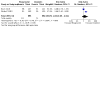
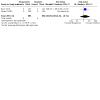
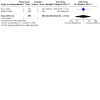







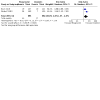
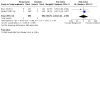







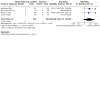

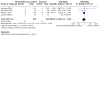
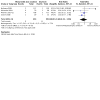

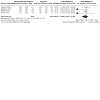

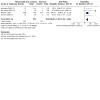


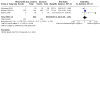


Update of
- doi: 10.1002/14651858.CD012754
References
References to studies included in this review
Blum 2010 {published data only}
-
- Blum J, Winikoff B, Raghavan S, Dabash R, Ramadan MC, Dilbaz B, et al. Treatment of post-partum haemorrhage with sublingual misoprostol versus oxytocin in women receiving prophylactic oxytocin: a double-blind, randomised, non-inferiority trial. Lancet 2010;375(9710):217-23. - PubMed
-
- Blum J, Winikoff B, Raghavan S, Dabash R, Ramadan MC, Dilbaz B, et al. Treatment of postpartum hemorrhage with sublingual misoprostol versus oxytocin: results from a randomized non-inferiority trial among women receiving prophylactic oxytocin. International Journal of Gynecology & Obstetrics 2009;107(Suppl 2):S22-S23. [NCT00116350]
-
- Dao B, Blum J, Barrera G, Cherine Ramadan M, Dabash R, Darwish E, et al. Side effect profiles for misoprostol and oxytocin in the treatment of postpartum hemorrhage. International Journal of Gynecology & Obstetrics 2009;107(Suppl 2):S150.
-
- NCT00116350. Misoprostol for the treatment of postpartum hemorrhage. clinicaltrials.gov/ct2/show/NCT00116350 (29 June 2005).
Hofmeyr 2004 {published data only}ISRCTN72263357
-
- ISRCTN72263357. Misoprostol for treating postpartum haemorrhage: a randomised controlled trial. isrctn.com/ISRCTN72263357 (9 July 2004). - PMC - PubMed
-
- Maholwana B, Hofmeyr GJ, Nikodem C, Ferreira S, Singata M, Mangesi L, et al. Misoprostol for treating postpartum haemorrhage. In: 21st Conference on Priorities in Perinatal Care in South Africa. 2002.
Lokugamage 2001 {published data only}
-
- Lokugamage AU, Moodley J, Sullivan K, Rodeck CH, Niculescu L, Tigere P. The Durban primary postpartum haemorrhage study. In: Women's Health - into the new millennium. In: Proceedings of the 4th International Scientific Meeting of the Royal College of Obstetricians and Gynaecologists. Vol. 77-8. 1999.
-
- Lokugamage AU, Sullivan KR, Niculescu I, Tigere P, Onyangunga F, El Refaey H, et al. A randomized study comparing rectally administered misoprostol versus Syntometrine combined with an oxytocin infusion for the cessation of primary post partum hemorrhage. Acta Obstetricia et Gynecologica Scandinavica 2001;80:835-9. - PubMed
Walraven 2004 {published data only}
-
- Walraven G, Dampha Y, Bittaye B, Sowe M, Hofmeyr J. Misoprostol in the treatment of postpartum haemorrhage in addition to routine management: a placebo randomised controlled trial. BJOG: an international journal of obstetrics and gynaecology 2004;111:1014-7. - PubMed
Widmer 2010 {published data only}
-
- Villar J. Misoprostol to treat postpartum hemorrhage (PPH): a randomized controlled trial (Argentina, Egypt, South Africa, Thailand and Viet Nam). isrctn.com/ISRCTN34455240 2006.
-
- Widmer M, Blum J, Hofmeyr GJ, Carroli G, Abdel-Aleem H, Lumbiganon P, et al. Misoprostol as an adjunct to standard uterotonics for treatment of post-partum haemorrhage: a multicentre, double-blind randomised trial. Lancet 2010;375(9728):1808-13. - PubMed
Winikoff 2010 {published data only}
-
- Winikoff B, Dabash R, Durocher J, Darwish E, Ngoc NT, Leon W, et al. Treatment of postpartum hemorrhage with sublingual misoprostol versus oxytocin: results from a randomized, non-inferiority trial among women not exposed to oxytocin during labor. International Journal of Gynecology & Obstetrics 2009;107(Suppl 2):S59.
-
- Winikoff B, Dabash R, Durocher J, Darwish E, Nguyen TN, Leon W, et al. Treatment of post-partum haemorrhage with sublingual misoprostol versus oxytocin in women not exposed to oxytocin during labour: a double-blind, randomised, non-inferiority trial. Lancet 2010;375(9710):210-6. - PubMed
References to studies excluded from this review
Abbas 2019 {published data only}
-
- Abbas DF, Jehan N, Diop A, Durocher J, Byrne ME, Zuberi N, et al. Using misoprostol to treat postpartum hemorrhage in home deliveries attended by traditional birth attendants. International Journal of Gynaecology and Obstetrics 2019 Mar;144(3):290-6. [CENTRAL: CN-01707705] [PMID: ] - PubMed
Chatterjee 2016 {published data only}
IRCT2012122411862N1 {published data only}
-
- Sahaf F. Evaluation of effect of intra venous tranexamic acid and misoprostol on post partum hemorrhage and side effects of hemorrhage. http://en.search.irct.ir/view/11911 28 April 2013.
Raghavan 2016 {published data only}
-
- Raghavan S, Geller S, Miller S, Goudar SS, Anger H, Yadavannavar MC, et al. Misoprostol for primary versus secondary prevention of postpartum haemorrhage: a cluster-randomised non-inferiority community trial. BJOG: an international journal of obstetrics and gynaecology 2016;123:120-7. - PMC - PubMed
Sahhaf 2014 {published data only}
Suhrabi 2016 {published data only}
Takagi 1976 {published data only}
-
- Takagi S, Yoshida T, Togo Y, Tochigi H, Abe M, Sakata H, et al. The effects of intramyometrial injection of prostaglandin F2alpha on severe post-partum hemorrhage. Prostaglandins 1976;12(4):565-79. - PubMed
References to studies awaiting assessment
Maged 2016 {published data only}
-
- Maged AM, Hassan AM, Shehata NA. Carbetocin versus oxytocin in the management of atonic post partum haemorrhage (PPH) after vaginal delivery: a randomised controlled trial. Archives of Gynecology and Obstetrics 2016;293(5):993-9. - PubMed
-
- NCT02304055. Carbetocin versus oxytocin in the management of atonic post partum haemorrhage (PPH) in women delivered vaginally: a randomised controlled trial. clinicaltrials.gov/show/NCT02304055 2014.
NCT01116050 {published data only}
-
- NCT01116050. Intrarectal misoprostol in postpartum haemorrhage (HEMOSTOP). clinicaltrials.gov/ct2/show/record/NCT01116050 2010.
References to ongoing studies
ISRCTN16416766 {published data only}ISRCTN16416766
-
- COPE: Carboprost vs oxytocin as the first line treatment of primary postpartum haemorrhage; a phase IV, double-blind, double-dummy, randomised controlled trial. https://doi.org/10.1186/ISRCTN16416766. [DOI: ]
-
- EUCTR2018-001829-11-GB. The carboprost or oxytocin postpartum haemorrhage effectiveness study [The carboprost or oxytocin postpartum haemorrhage effectiveness study. Carboprost vs oxytocin as the first line treatment of primary postpartum haemorrhage; a phase IV, double-blind, double-dummy, randomised controlled trial. - COPE]. Http://www.who.int/trialsearch/Trial2.aspx?TrialID=EUCTR2018-001829-11-GB 2019. [CENTRAL: CN-02068021]
NCT01485562 {published data only}
-
- NCT01485562. Treatment of postpartum haemorrhage (PPH) using misoprostol in home births. clinicaltrials.gov/show/NCT01485562 (5 November 2011).
NCT01508429 {published data only}
-
- NCT01508429. Misoprostol for treatment of postpartum haemorrhage (PPH) in home births. clinicaltrials.gov/show/NCT01508429 (12 January 2012).
NCT01600612 {published data only}
-
- NCT01600612. Oxytocin, carbetocin and misoprostol for treatment of postpartum hemorrhage: a multicentric randomized trial. clinicaltrials.gov/show/NCT01600612 (17 May 2012).
NCT01619072 {published data only}
-
- NCT01619072. Misoprostol for treatment of postpartum hemorrhage at community-level births in Egypt. clinicaltrials.gov/ct2/show/NCT01619072 (14 June 2012).
NCT02306733 {published data only}
-
- NCT02306733. Ergometrine versus oxytocin in the management of atonic post-partum haemorrhage (PPH) in women delivered vaginally. clinicaltrials.gov/ct2/show/record/NCT02306733 (30 November 2014).
NCT02410759 {published data only}
-
- NCT02410759. Carbetocin versus ergometrine in the management of atonic post partum haemorrhage (PPH) in women delivered vaginally. clinicaltrials.gov/ct2/show/NCT02410759 (31 March 2015).
NCT03584854 {published data only}
-
- NCT03584854. Second- line uterotonics in postpartum hemorrhage: a randomized clinical trial [Second- line uterotonics in postpartum hemorrhage: a randomized clinical trial]. Https://clinicaltrials.gov/show/nct03584854 2018 Jul 12. [CENTRAL: CN-01661057]
NCT03870503 {published data only}
-
- NCT03870503. Carbetocin versus oxytocin plus sublingual misoprostol in the management of atonic postpartum hemorrhage [Carbetocin versus oxytocin plus sublingual misoprostol in the management of atonic postpartum hemorrhage (PPH) after vaginal delivery: a randomized controlled trial]. Https://clinicaltrials.gov/show/nct03870503 2019 Mar 12. [CENTRAL: CN-01911722]
Additional references
Brignardello‐Petersen 2018
-
- Brignardello-Petersen R, Bonner A, Alexander PE, Siemieniuk RA, Furukawa TA, Rochwerg B, et al. Advances in the GRADE approach to rate the certainty in estimates from a network meta-analysis. Journal of Clinical Epidemiology 2018;93:36-44. - PubMed
Bucher 1997
-
- Bucher HC, Guyatt GH, Griffith LE, Walter SD. The results of direct and indirect treatment comparisons in meta-analysis of randomized controlled trials. Journal of Clinical Epidemiology June 1997;50(6):683-91. - PubMed
Caldwell 2005
Caldwell 2010
-
- Caldwell DM, Welton NJ, Ades AE. Mixed treatment comparison analysis provides internally coherent treatment effect estimates based on overviews of reviews and can reveal inconsistency. Journal of Clinical Epidemiology 2010;63:875-82. - PubMed
Carlisle 2017
-
- Carlisle JB. Data fabrication and other reasons for non-random sampling in 5087 randomised, controlled trials in anaesthetic and general medical journals. Anaesthesia 2017;72(8):944-52. - PubMed
Carroll 2016
Chaimani 2017
-
- Chaimani A, Caldwell DM, Li T, Higgins JP, Salanti G. Additional considerations are required when preparing a protocol for a systematic review with multiple interventions. Journal of Clinical Epidemiology 2017;83:65-74. [PMID: ] - PubMed
DerSimonian 1986
-
- DerSimonian R, Laird N. Meta-analysis in clinical trials. Controlled Clinical Trials 1986;7(3):177-88. - PubMed
Dias 2010
-
- Dias S, Welton NJ, Caldwell DM, Ades AE. Checking consistency in mixed treatment comparison meta-analysis. Statistics in Medicine 2010;29:932-44. - PubMed
Dias 2013
Gallos 2018
Higgins 2011
-
- Higgins JP, Green S, editors. Cochrane Handbook for Systematic Reviews of Interventions Version 5.1.0 (updated March 2011). The Cochrane Collaboration, 2011. Available from handbook.cochrane.org.
Higgins 2012
Hogerzeil 1993
-
- Hogerzeil HV, Walker GJ, Goeje MJ. Stability of injectable oxytocics in tropical climates. results of field surveys and simulation studies on ergometrine, methylergometrine and oxytocin. Geneva: World Health Organization (WHO) 1993.
Meher 2019
-
- Meher S, Cuthbert A, Kirkham JJ, Williamson P, Abalos E, Aflaifel N et al. Core outcome sets for prevention and treatment of postpartum haemorrhage: an international Delphi consensus study. BJOG 2019;126(1):83-93. - PubMed
Mousa 2014
Puhan 2014
-
- Puhan MA, Schünemann HJ, Murad MH, Li T, Brignardello-Petersen R, Singh JA, et al. A GRADE Working Group approach for rating the quality of treatment effect estimates from network meta-analysis. BMJ 2014;349:g5630. - PubMed
RevMan 2014 [Computer program]
-
- Nordic Cochrane Centre, The Cochrane Collaboration Review Manager (RevMan). Version 5.3. Copenhagen: Nordic Cochrane Centre, The Cochrane Collaboration, 2014.
Rhodes 2015
Salanti 2011
-
- Salanti G, Ades AE, Ioannidis JP. Graphical methods and numerical summaries for presenting results from multiple treatment meta-analysis: an overview and tutorial. Journal of Clinical Epidemiology 2011;64(2):163-71. - PubMed
Say 2014
-
- Say L, Chou D, Gemmill A, Tunçalp Ö, Moller AB, Daniels J, et al. Global causes of maternal death: a WHO systematic analysis. Lancet Global Health 2014;2(6):e323-333. - PubMed
Tobias 2014
-
- Tobias A, Catala-Lopez F, Roque M. Development of an Excel spreadsheet for meta-analysis of indirect and mixed treatment comparisons [DESARROLLO DE UNA HOJA EXCEL PARA METAANÁLISIS DE COMPARACIONES INDIRECTAS Y MIXTAS]. Revista Espanola de Salud Publica 2014;88(1):5-15. - PubMed
Turner 2012
White 2011
-
- White I. Multivariate random-effects meta-regression:Updates to mvmeta. Stata Journal 2011;11(2):255-70.
White 2012
White 2015
-
- White IR. Network meta-analysis. Stata Journal 2015;15(4):951-85.
WHO 1993
-
- WHO. Stability of injectable oxytocics in tropical climates: results of field surveys and simulation studies on ergometrine, methylergometrine, and oxytocin. Geneva: World Health Organization 1993.
WHO 2012
-
- World Health Organization. Recommendation for the prevention and treatment of postpartum haemorrhage. WHO 2012. - PubMed
WHO 2018
-
- World Health Organization. Uterotonics for the prevention of postpartum haemorrhage. WHO 2018. - PubMed
Widmer 2018
-
- Widmer M, Piaggio G, Nguyen TM, Osoti A, Owa OO, Misra S, et al. Heat-stable carbetocin versus oxytocin to prevent hemorrhage after vaginal birth. New England Journal of Medicine 2018;379(8):743-52. - PubMed
References to other published versions of this review
Parry Smith WR 2017
-
- Parry Smith WR, Gallos ID, Williams HM, Widmer M, Angolkar M, Tobias A, et al. First-line uterotonics for treating postpartum haemorrhage: a systematic review and network meta-analysis [F]. Cochrane Database of Systematic Reviews 2017, Issue 8. Art. No: CD012754. [DOI: 10.1002/14651858.CD012754] - DOI
Publication types
MeSH terms
Substances
Associated data
Grants and funding
LinkOut - more resources
Full Text Sources
Medical

